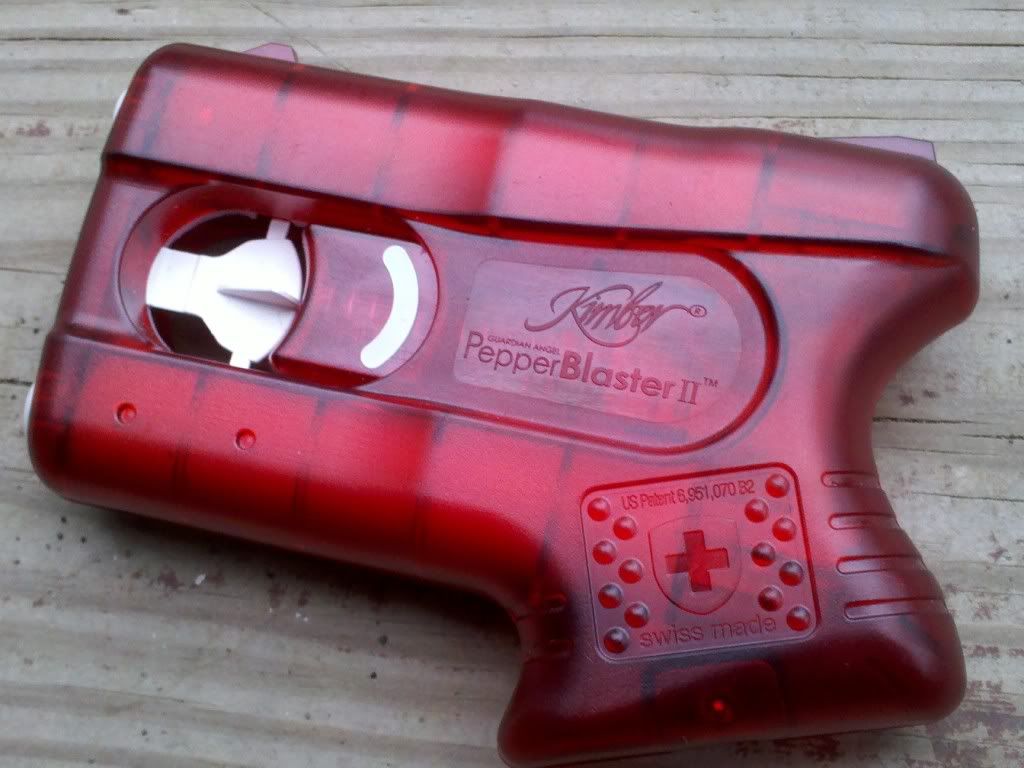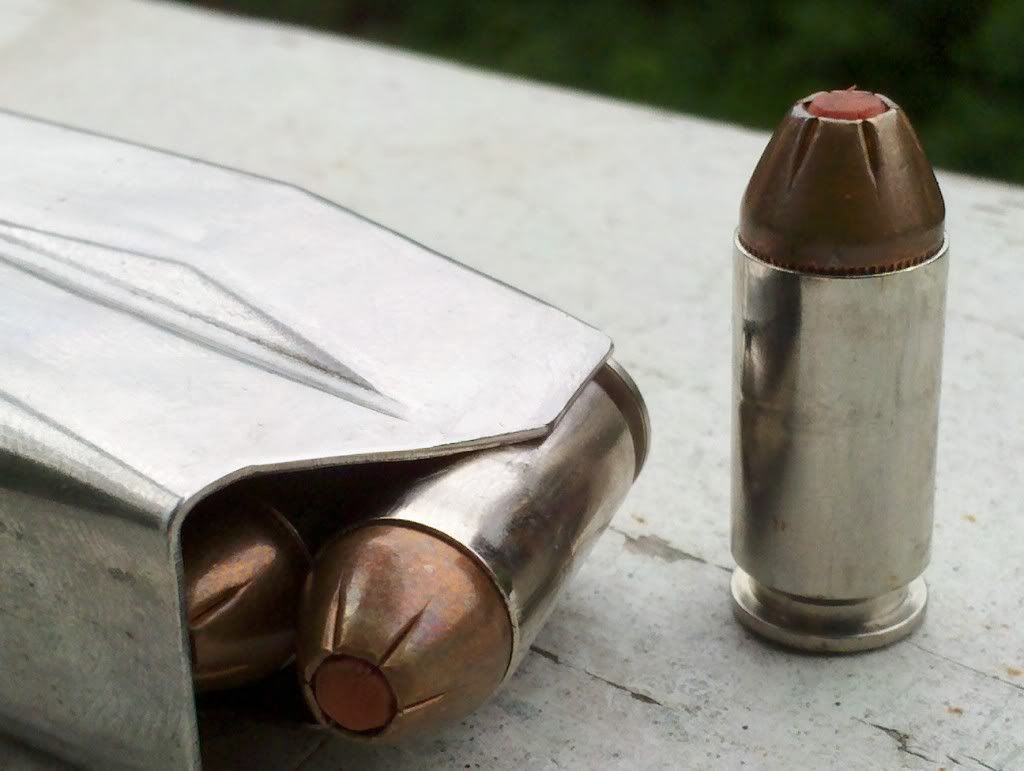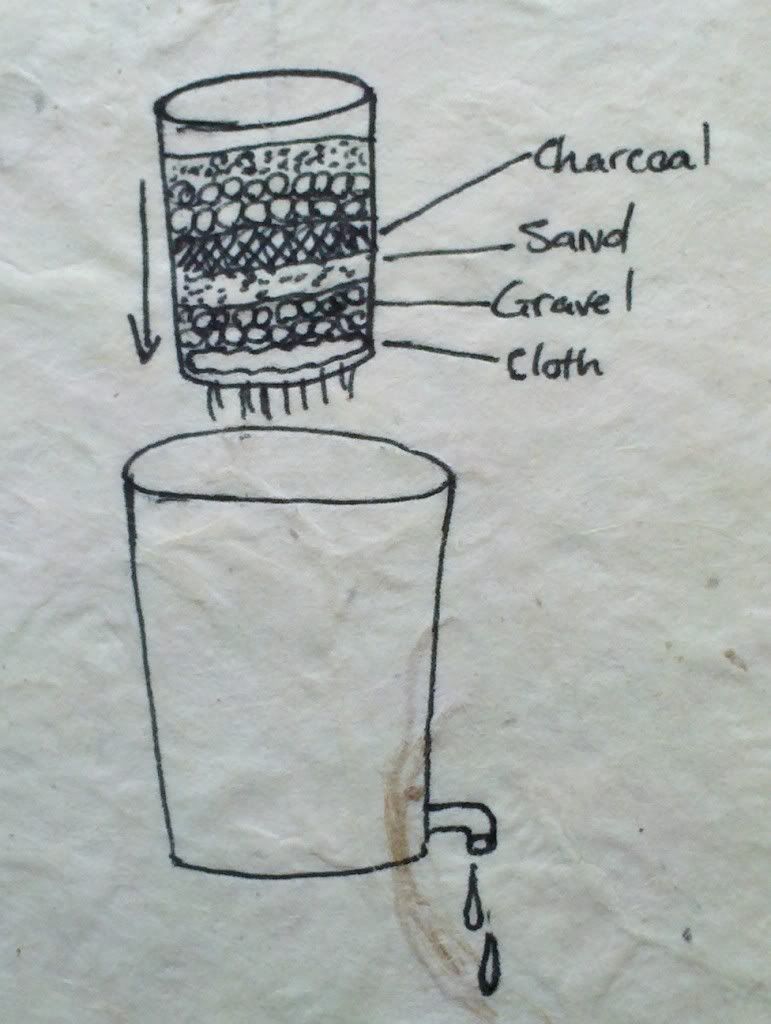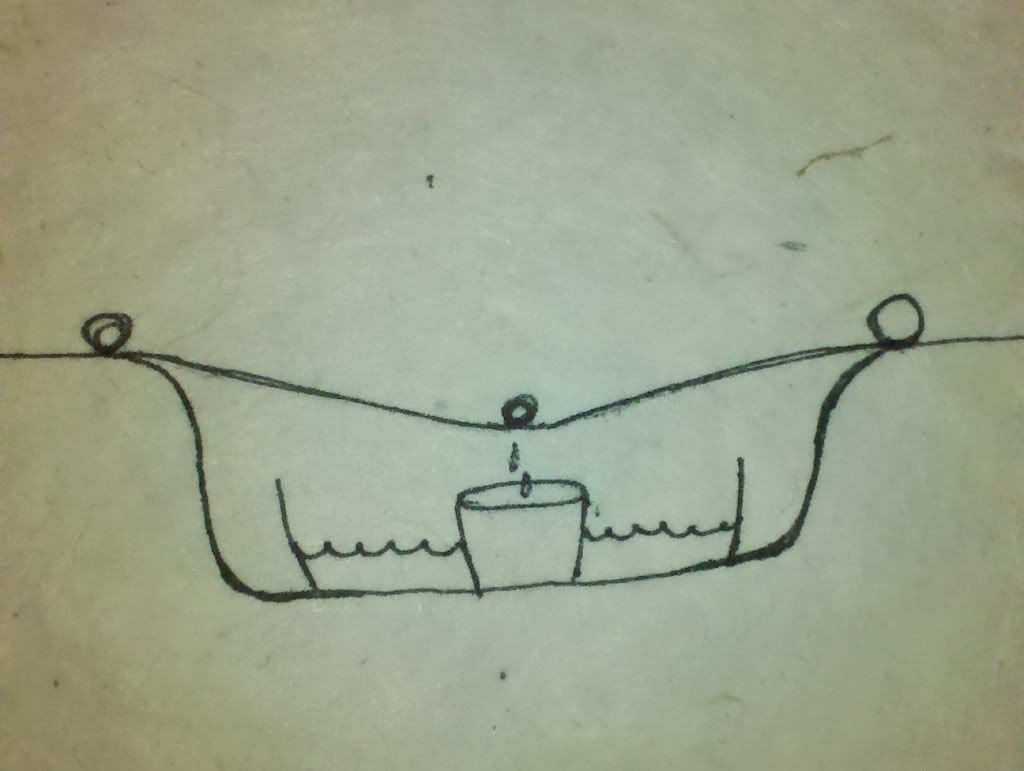If you decide that carrying a gun is not right for you, or you live in area that it's not legal, (or so painstaking to get a license it's not worth it) there are other options. Some states allow concealed carry of tasers and less lethal options. My personal favorite is the Kimber pepper blaster. They retail around 40$ and can be purchased at most places that would sell firearms or pepper spray. Unlike typical pepper spray, these are effective out to about 12 feet. The active ingredient (capsaicin) is in a gel, instead of an aerosol, this limits blowback onto the user. Newer models have sights like a gun and are really easy to use. Check local laws regarding the carry of such items. The retailer you buy it from would be the best place for information in your area.
Before puchasing a handgun you need to decide what you're going to want to carry. I try to balance stopping power, price, and concealment. There are thousands of choices out there, it all depends on what your situation is. A good route to take is to have a couple options. Maybe have a larger pistol with a lot of power that you can carry when its convenient enough to conceal. For instance when you're wearing a heavy coat or sweatshirt. Then to also have something smaller and lighter for the summer months when you're wearing shorts and a t-shirt.
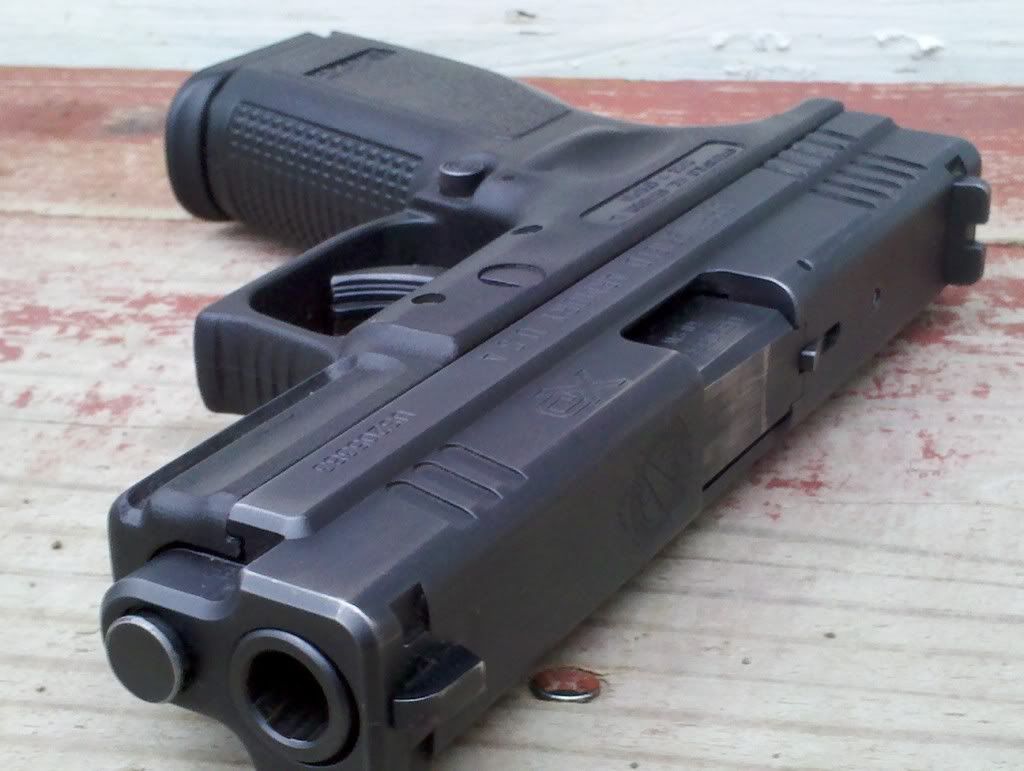
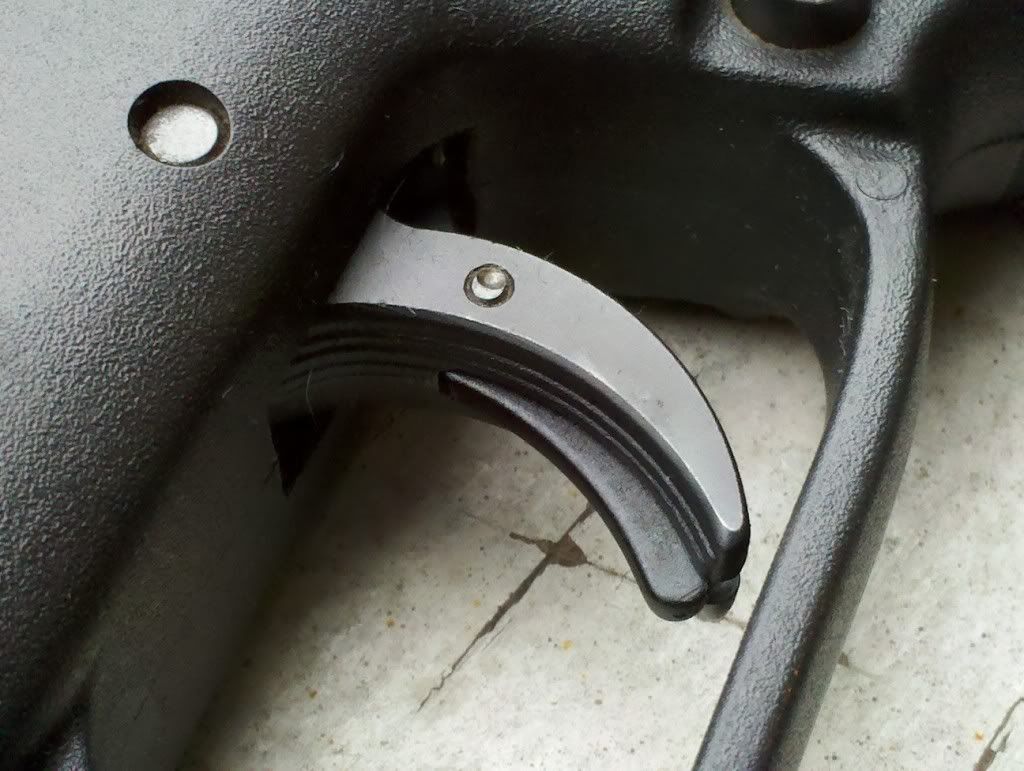
For my main carry pistol I went with a Springfield Armory XD in .40 caliber. This is a very rugged, polymer framed pistol. I chose it because of it's reliability, safety, and reputation. I've fired over 2000 rounds through it and only had a few malfunctions. (all ammo related) The main draw for me was the safety system, it's equipped with two safeties. The grip safety is on the rear of the gun. It makes it so the gun can't fire unless it is being gripped, if it was dropped for instance. The second safety is on the trigger. The trigger canot be pulled without a deliberate action. this protects from snagging the trigger and accidentally discharging it. Many other guns in the same class, Glock would be the most prominent, only have the trigger safety, or none at all. Some Glocks do have manual safeties. I garuantee the first time you go to fire it at the range and realize you left the safety on, you'll wish you had something more intuitive though. They're also equipped with loaded chamber and cocked indicators. If you live in a state that has no magazine restricions I recommened checking out the XDm as well, everything the XD has with higher magazine capacity.
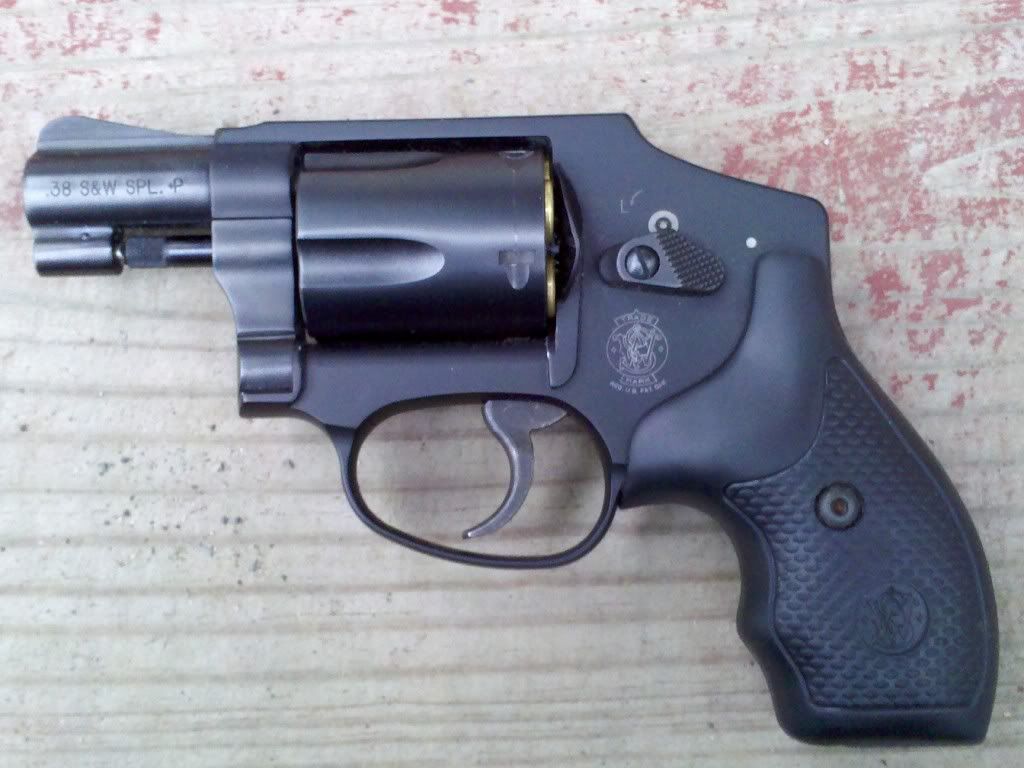 For my secondary, I carry a Smith and Wesson M442 airweight, in .38 special +P. Not quite as powerful as the .40 caliber, but being able to carry it in my pocket or on my ankle is really nice. The reason I was drawn to this model is the reduced weight, and hammerless design. You can definetly get a gun from Taurus or a half dozen other manufacturers that would be comparable in quality. They would most likely be much cheaper as well, but they'll never be as light. Before this one I had an older model 36, a nearly identical gun on the surface, but a whole lot heavier. My new one loaded is lighter than the old one unloaded. But if you're looking to save some cash and can deal with the additional weight I would check out Taurus. The hammerless design is offered by most revolver manufacturers. The lack of hammer makes it much less likely to snag on clothing while being drawn. You do lose a little accuracy by not being able to fire it single action. I think its a sacrifice worth making, especially if you're going to be carrying it in your pocket. It's also equipped with an integral locking sytem. When locked, the trigger cannot be pulled.
For my secondary, I carry a Smith and Wesson M442 airweight, in .38 special +P. Not quite as powerful as the .40 caliber, but being able to carry it in my pocket or on my ankle is really nice. The reason I was drawn to this model is the reduced weight, and hammerless design. You can definetly get a gun from Taurus or a half dozen other manufacturers that would be comparable in quality. They would most likely be much cheaper as well, but they'll never be as light. Before this one I had an older model 36, a nearly identical gun on the surface, but a whole lot heavier. My new one loaded is lighter than the old one unloaded. But if you're looking to save some cash and can deal with the additional weight I would check out Taurus. The hammerless design is offered by most revolver manufacturers. The lack of hammer makes it much less likely to snag on clothing while being drawn. You do lose a little accuracy by not being able to fire it single action. I think its a sacrifice worth making, especially if you're going to be carrying it in your pocket. It's also equipped with an integral locking sytem. When locked, the trigger cannot be pulled. Possibly the most important part of carrying concealed is choosing a holster. Last thing you wanna do is shoot youself in the leg because you were too cheap to buy a holster. I have quite a few for all my guns. Not because I planned it that way, but because I was cheap. Do not buy universal holsters. They are not very good, ever. Spend the money and buy a Kydex or leather holster made for your gun. I'm not a big fan of Kydex (plastic) holsters, simply a matter of comfort for me. I think in open carry they are well suited, but not my cup of tea I guess. My brand of choice is Desantis. I have two leather ones for the XD, one in the waistband and one on the belt. Both are very comfortable, but the in waistband one does show a little when you bend over or sit down. The belt holster is great for open carry or concealed, provided my shirt is loose fitting enough. For the .38 I use an ankle holster, (also from Desantis) or carry it in my pocket.
Ammunition is very important too. Everyone has their own preference on brand, caliber and the like. The whole point is that if you're pulling a gun, it should be in the defense of your life or someone elses. You do not draw your weapon unless deadly force is your only option. I am fortunate that in the couple years I've been carrying I have never had to draw my gun. I hope I never do. But if I did, the last thing I should be firing is target rounds. Most cheap target rounds are full metal jacket. These don't stop when they hit someone, they keep going long after they exit the bad guy. Last thing you want to do is hit an innocent bystander. Do yourself a favor and carry high quality personal defense rounds. Theres way to many out there for me to review them all but I'm pretty brand loyal to Hornady. Generally I carry their TAP Critical Defense. They're frangible hollowpoints with a polymer tip. Because of the hollowpoint design they stop within a few inches of impact, limiting the chance of it going through. This also expends all of the bullets energy, causing more damage.
Nothing I can tell you here can make you more safe than proper training and practice. If you don't feel comfortable, take a class. Read up on proper technique, and get out to the range as often as you can. You could have the nicest and most powerful gun on the market, but if you havent developed any skill with it, you're screwed. Muscle memory is very crucial when it comes to drawing and firing your weapon in a stressful situation. Practice until every move becomes second nature and you will give yourself the best chance in the worst possible situation.

